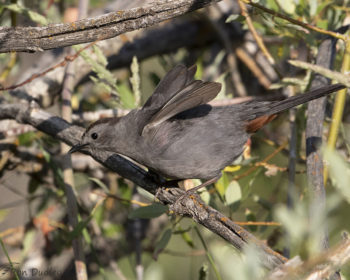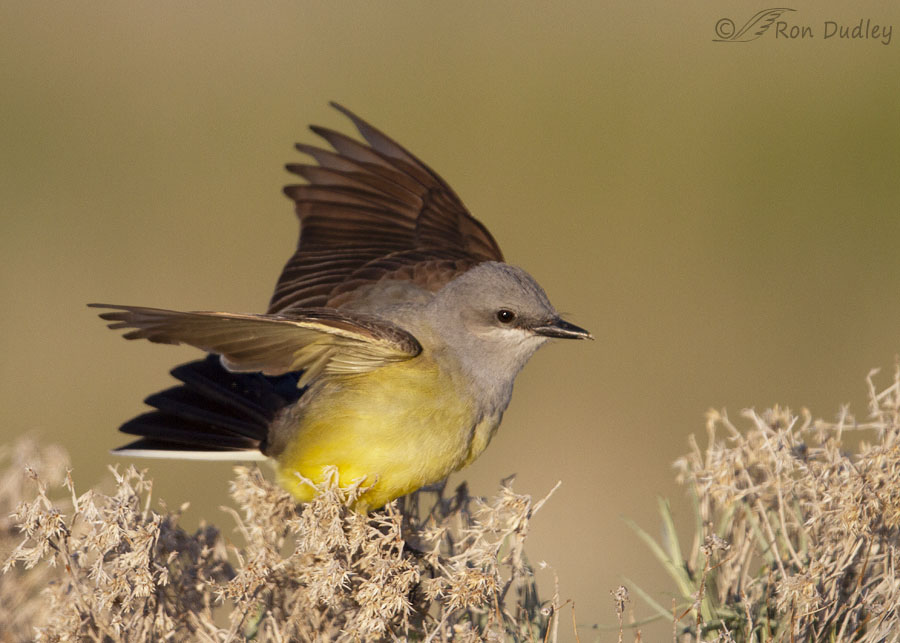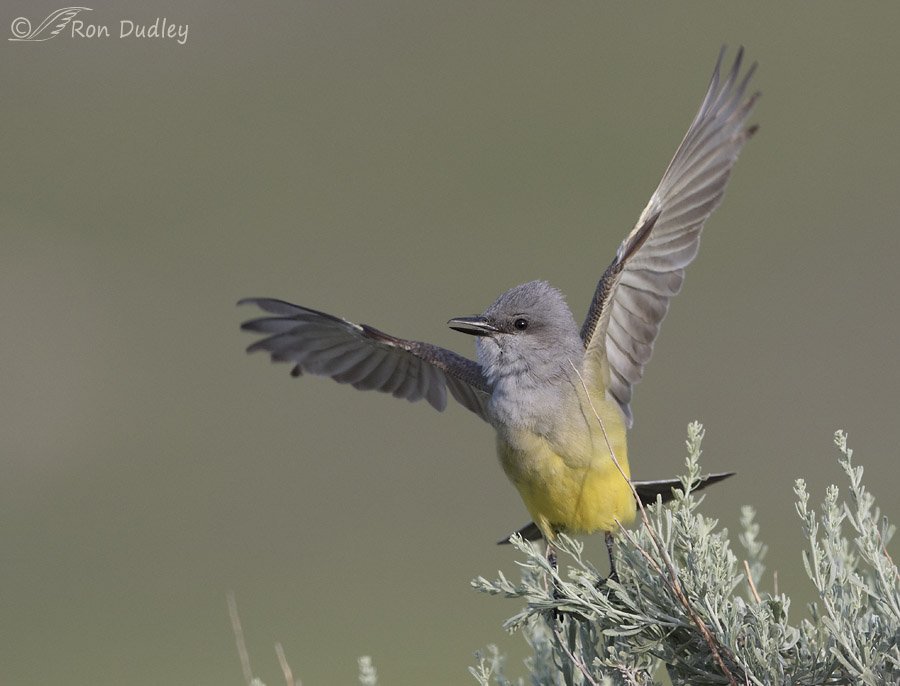Tag: wing flutter
Male Western Kingbird Displaying After Landing
Male Western Kingbird Displaying, Then Taking Off
At Long Last – The Red Crown Patch Of The Western Kingbird
Occasionally, even a mediocre shot can make my day. I’ve known about the red/orange crown patch of the Western Kingbird for some time now but until yesterday had never seen or photographed it. 1/1600, f/8, ISO 400, 500 f/4, 1.4 tc It normally lies concealed under the gray feathers on the top of the head and is rarely seen or photographed. Normally the crown patch is only revealed before or during an attack on another kingbird or a potential predator threatening its nest. 1/2500, f/5.6, ISO 500, 500 f/4 The most common aggressive pose toward other kingbirds is called the wing flutter, where the wings are extended and rapidly fluttered in small arcs. But typically the crown patch is not exposed during a wing flutter unless an actual attack on the other kingbird is imminent. 1/2500, f/5.6, ISO 640, 500 f/4 I’ve included this image and the next one to show how well the crown patch is concealed. Here, as this kingbird ejects and throws off a pellet, you have a good look at the top of the head with no suggestion of a red crown patch beneath the overlying crown plumage. 1/3200, f/6.3, ISO 500, 500 f/4, 1.4 tc And another kingbird, banking at takeoff, gives us a pretty good look at the top of the head with no hint of the patch. 1/3200, f/6.3, ISO 500, 500 f/4, 1.4 tc But yesterday a gull made the mistake of landing on a perch very close to this kingbirds nest and it’s…
Western Kingbird Wing Flutter
This morning we decided to get out of our rut a little bit (actually, I tend to like ruts) and look for birds somewhere new so we headed to the high country of Morgan County. We figured it would be a nice respite from the heat, and it was. We saw some beautiful country and quite a few birds, though most of them were a challenge to get close to. One thing really surprised me. I don’t believe I’ve ever seen such high concentrations of Black-headed Grosbeaks and Western Kingbirds anywhere. Both species were picking off bugs along the road and it was a delight to see so many of them. 1/2000, f/6.3, ISO 500, 500 f/4, 1.4 tc This Western Kingbird was performing the “wing flutter” that kingbirds are so well-known for. It’s an aggressive behavior that is usually directed at other kingbirds, as was the case here. I liked the pose and the way the Scrub Oak framed the bird and helped to break up the blue sky background. Ron




